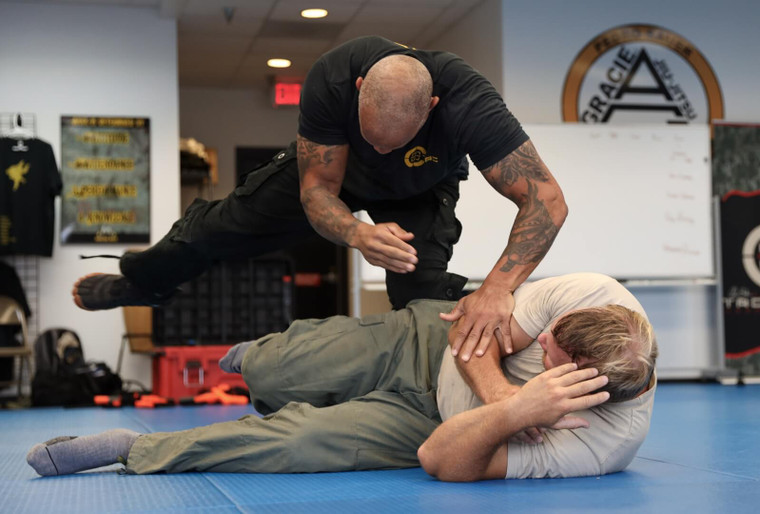From Mat to Muzzle: Defensive Tactics with Sifu Alan Baker
Posted by Sifu Alan Baker on Sep 26th 2023
John and I (Sifu Alan Baker) share a mutual affection for sushi, which has brought us together time and time again over the past few years. Our get-togethers transformed into a solid friendship, where topics ranged from our shared hobbies to more personal matters. Work, particularly the realm of defensive tactics, was never a central discussion point—until one day earlier this year.
As we delved into our professional undertakings, John expressed curiosity about the intricacies of my field. Our conversation naturally drifted towards the noticeable disconnect between firearms training and defensive tactics. It was a eureka moment, highlighting an unmet need in the industry.
This discussion marked the inception of a new project: crafting a program to bridge this glaring gap.
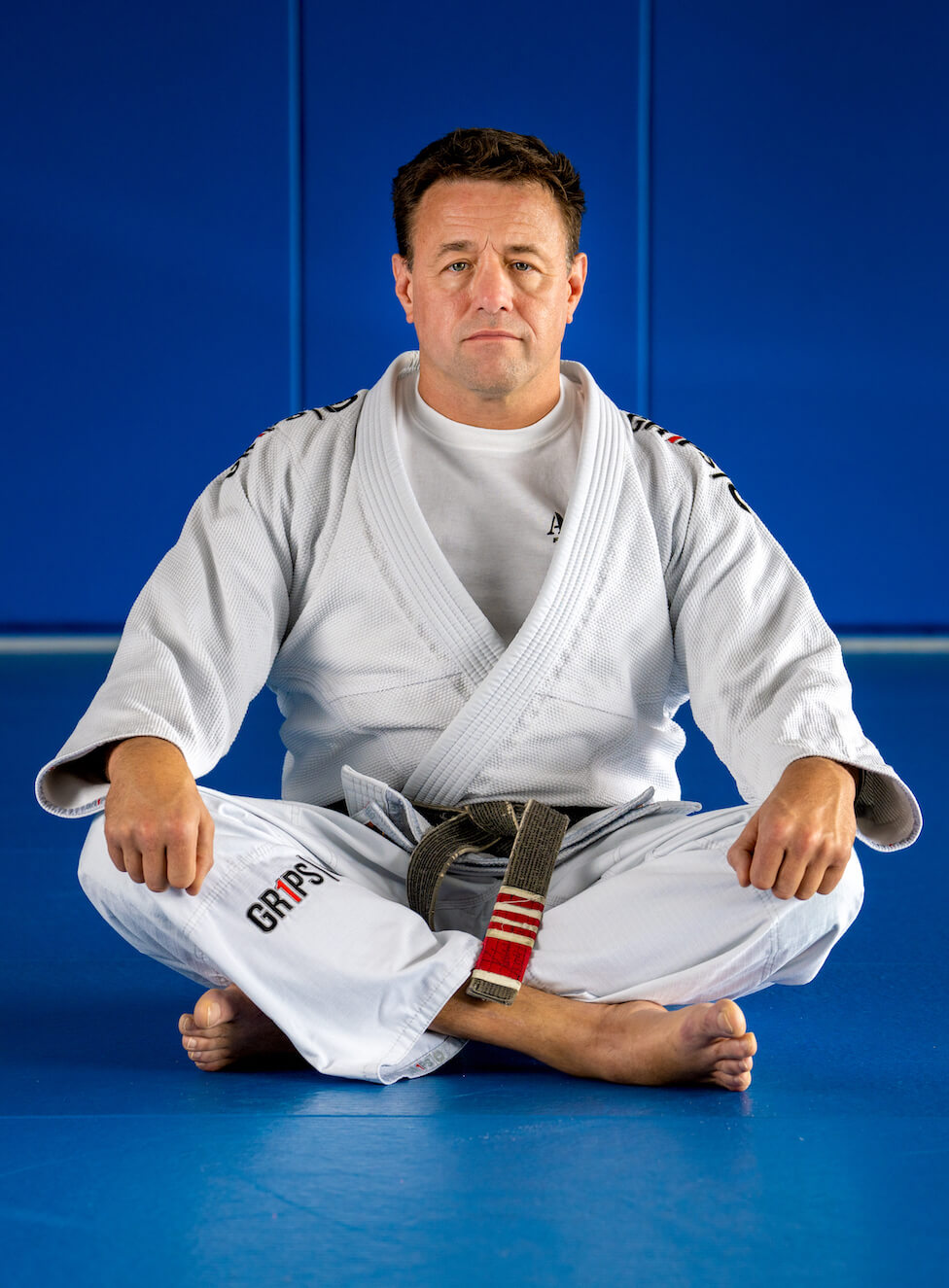
A background in dynamic defense
My wheels had been turning on this topic for quite some time. Drawing from my tenure as an instructor at the Executive Protection Institute in Virginia and the Vehicle Dynamics Institute in New Jersey, I recognized similar challenges.
I had previously crafted tailored programs for these prestigious institutions, addressing specific needs for their diverse student base. Moreover, my expertise led me to collaborate with numerous law enforcement agencies across the U.S., crafting specialized training modules. This vast experience laid the foundation for the Mat to Muzzle program, embodying years of knowledge, feedback, and continuous refinement.
The primary objective of Mat to Muzzle is to create a holistic training approach that cohesively merges defensive tactics with firearms proficiency. Beyond just the physical techniques, this integration also deeply considers the legal implications of using such skills.
We recognize that real-world scenarios demand expertise in self-defense and an understanding of firearms, all while ensuring that actions taken align with the rule of law. Mat to Muzzle aims to bridge these facets, offering a comprehensive program that equips individuals with practical skills and instills a deep respect for legal boundaries and ethical considerations.
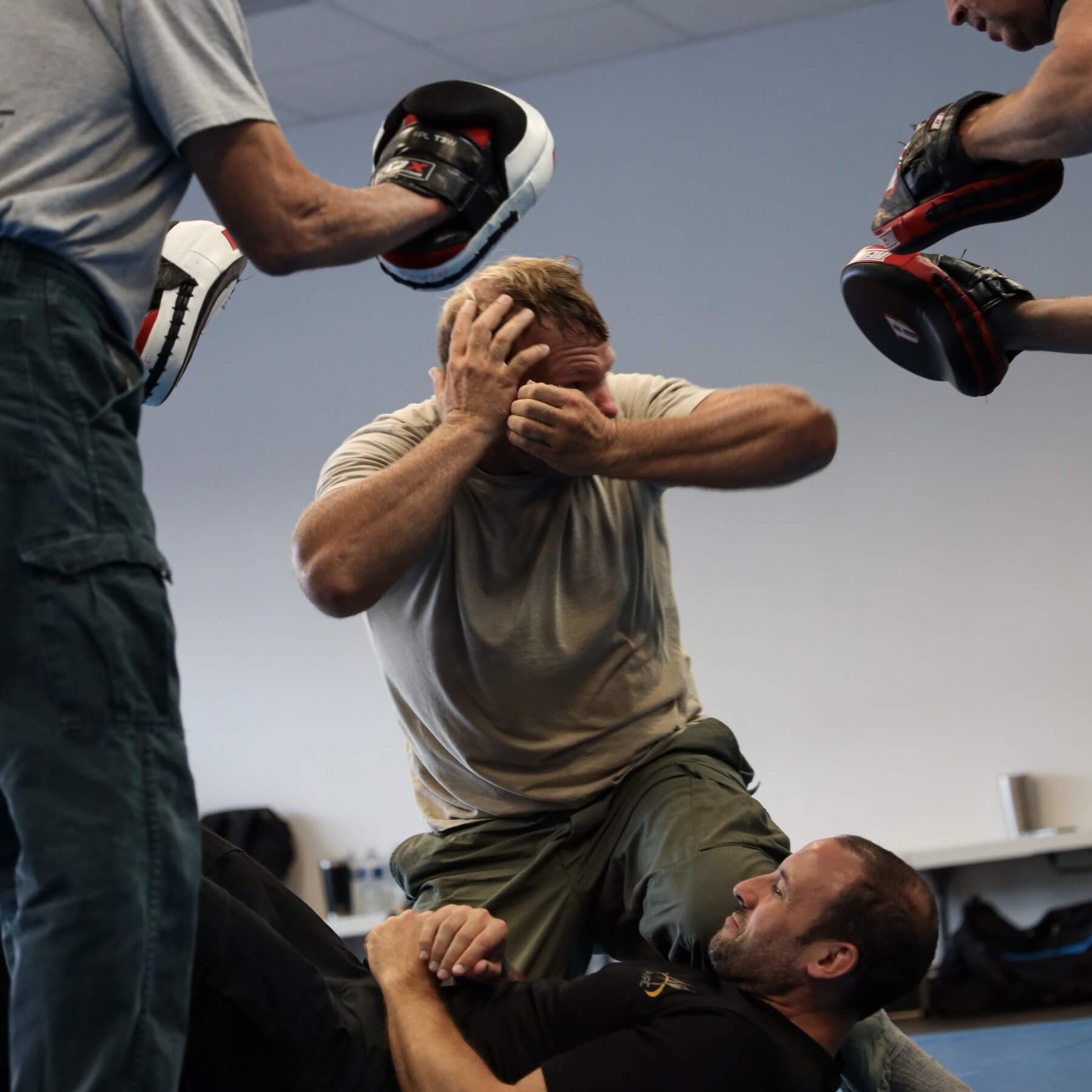
How to exercise verbal Judo
Furthermore, it's essential to acknowledge the significance of the verbal interactions and posturing that typically precede any physical confrontation. Often, conflicts can be diffused or escalated based on verbal exchanges alone. Mat to Muzzle delves deep into mastering the art of verbal engagement, teaching individuals how to effectively communicate, de-escalate volatile situations, and assertively posture themselves.
This not only helps in potentially avoiding physical altercations but also positions individuals to handle situations with confidence, awareness, and strategic intent. Recognizing and effectively navigating these initial moments can be pivotal in determining the trajectory of a potentially threatening scenario.
The art of effective communication is often humorously termed as the "gift of gab." Truly mastering it is akin to wielding a weapon in itself, capable of disarming potential threats even before they escalate. Within our training regimen, one of the most impactful exercises designed to cultivate this crucial skill is what we've labeled the "sidewalk drill."
Real world breakdown
Imagine two individuals on an imagined stretch of sidewalk engaged in an evolving conversation. This dialogue isn't just casual banter; it's an intricate, fluid, and unpredictable dance. From a slightly heated disagreement to a full-blown aggressive confrontation, the sidewalk drill emulates the vast spectrum of human interaction, pushing the boundaries up to and including scenarios that could necessitate lethal force.
But the real brilliance of this drill isn't just about preparing for the worst. It's in the nuanced moments of tension, the opportunity to defuse, redirect, and even prevent an escalation.
Practitioners hone their verbal responses and develop an awareness of body language, posture, and tone – all subtle but powerful tools in communication. This systematic practice empowers individuals with a toolkit of verbal strategies and physical cues to de-escalate situations, potentially sidestepping violence altogether.
Navigating confrontations isn't always about bracing for the most extreme reactions; it's equally about handling the subtler, more gradual escalations. Not every adversarial interaction catapults immediately into a full-blown physical altercation. Many a time, confrontations simmer at a lower intensity before potentially boiling over.
Recognizing this, it's imperative to equip oneself with techniques designed for these intermediate stages. These tactics allow you to maintain control and do so in a manner that's both socially acceptable and visually non-aggressive. Just as a physician would not employ heavy medication for a minor ailment, it's essential to have what can be called "soft control" methods at your disposal in confrontational situations.
Knowing how and when to de-escalate
"Soft Control" techniques are artful maneuvers that are non-provocative in nature. They aim to subtly manage the situation without exacerbating it. Imagine a scenario where a heightened voice could be neutralized with a calming gesture or a push could be deflected without returning aggression.
The objective of these methods isn't just physical management but also psychological deflection – steering the situation towards de-escalation by being non-threatening and, importantly, non-insulting. This nuanced approach ensures that one can intervene and control without unnecessarily inflaming the situation further.
The subsequent stage of the program delves into scenarios when confrontations escalate, and physical measures become inevitable. In these intense moments, an individual who carries concealed must remain acutely aware of their Everyday Carry (EDC).
This not only pertains to the accessibility and readiness of their concealed weapon but also to understanding how their other carried items, like phones, wallets, or keys, can influence the dynamics of a physical altercation. It's crucial to balance defending oneself and ensuring the concealed weapon remains secure or is appropriately accessed when the situation demands it.
Integrating modern weapon systems
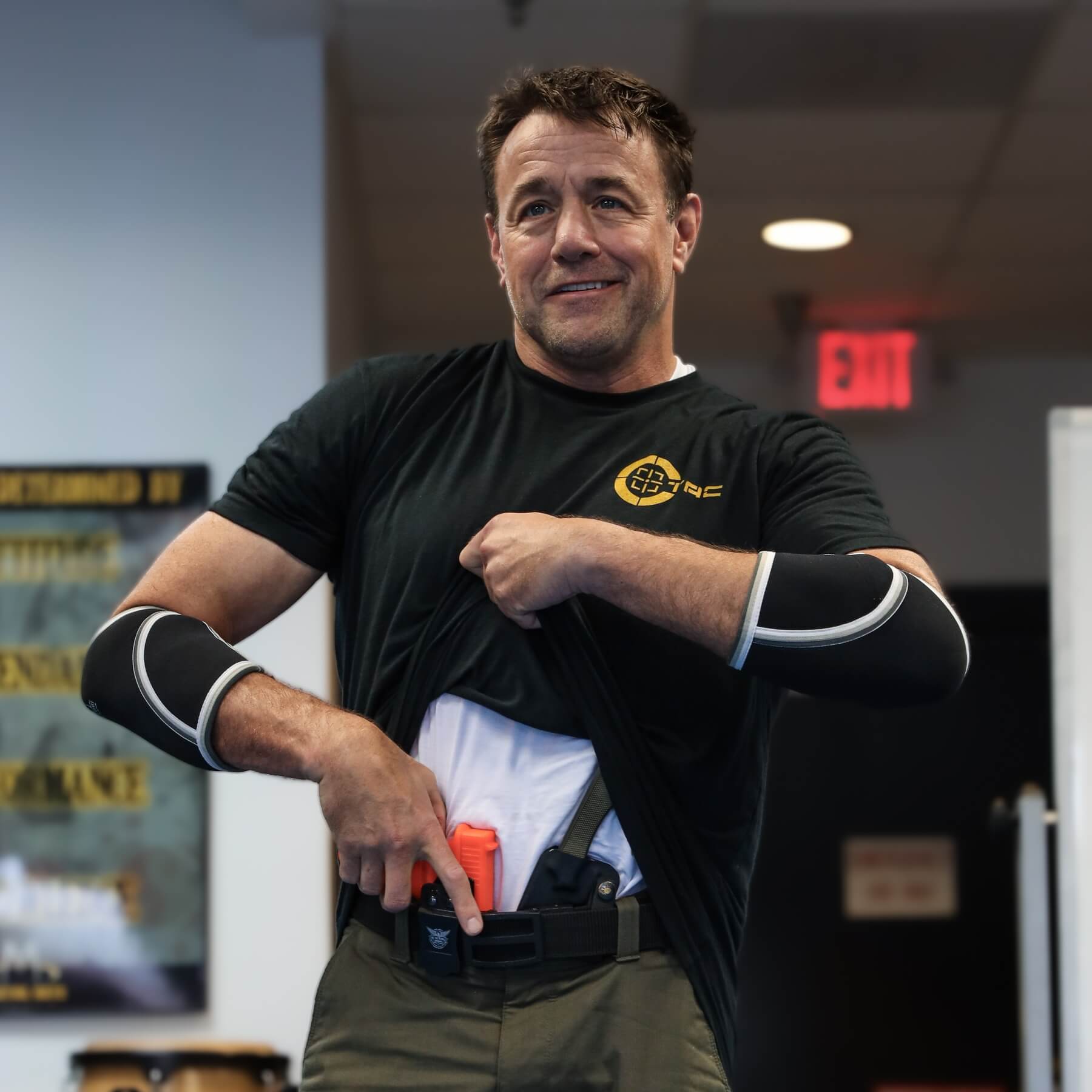
The culminating phase of the program delves into scenarios where a firearm or edged weapon becomes part of the equation. In these high-stakes moments, it's imperative to master the foundational principles of gun and weapon disarming.
Rather than focusing solely on rote techniques, our approach emphasizes principles and concepts. This allows for adaptability in various situations and cultivates the essential attributes and reflexive skills necessary to disarm an opponent effectively. By internalizing these principles, participants can handle a broader range of confrontations with greater confidence and efficacy.
Pulling it all together
In reflection, the evolution of our Mat to Muzzle program, borne from casual sushi outings between friends, now stands as a testament to the intricate dance between proactive defense and strategic offense. Our shared quest was to provide an integrated approach to confrontation – from those first verbal exchanges to the potential need for physical intervention and, finally, the moments that demand the highest level of skill and discretion.
The underlying principle that runs as a golden thread throughout the program is an unwavering commitment to de-escalation, awareness, and respect for life and law.
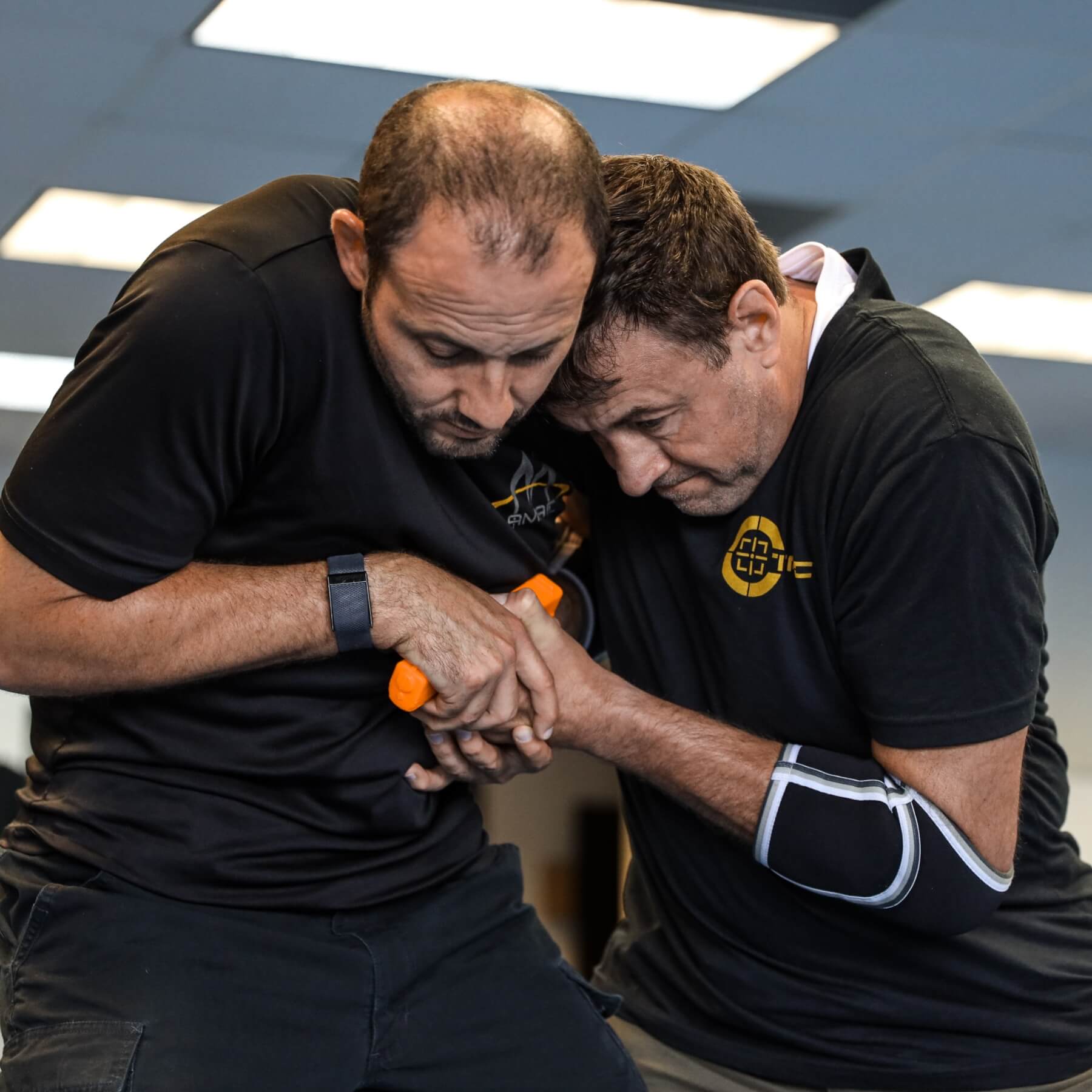
Whether mastering the art of effective communication, understanding the subtleties of low-force control methods, or the precise techniques required for disarmament, every module is designed to arm participants with the knowledge, skill, and discernment to handle confrontations judiciously.
Furthermore, beyond the tangible techniques and drills lies an even more profound message: true power is not just in strength or skill but in the wisdom of knowing when and how to use them. As participants journey through the Mat to Muzzle program, they're not just gaining a repertoire of defensive tactics but embracing a philosophy that prioritizes restraint, empathy, and strategic foresight.
To all future and current participants of this program, remember that the true mark of a warrior is not only in how they face conflict but in how they prevent it, manage it, and ultimately resolve it.
May you carry the lessons from this program as techniques in your toolkit and guiding principles in your journey through life. And as you walk your path, always strive for understanding, preparedness, and the highest level of integrity.
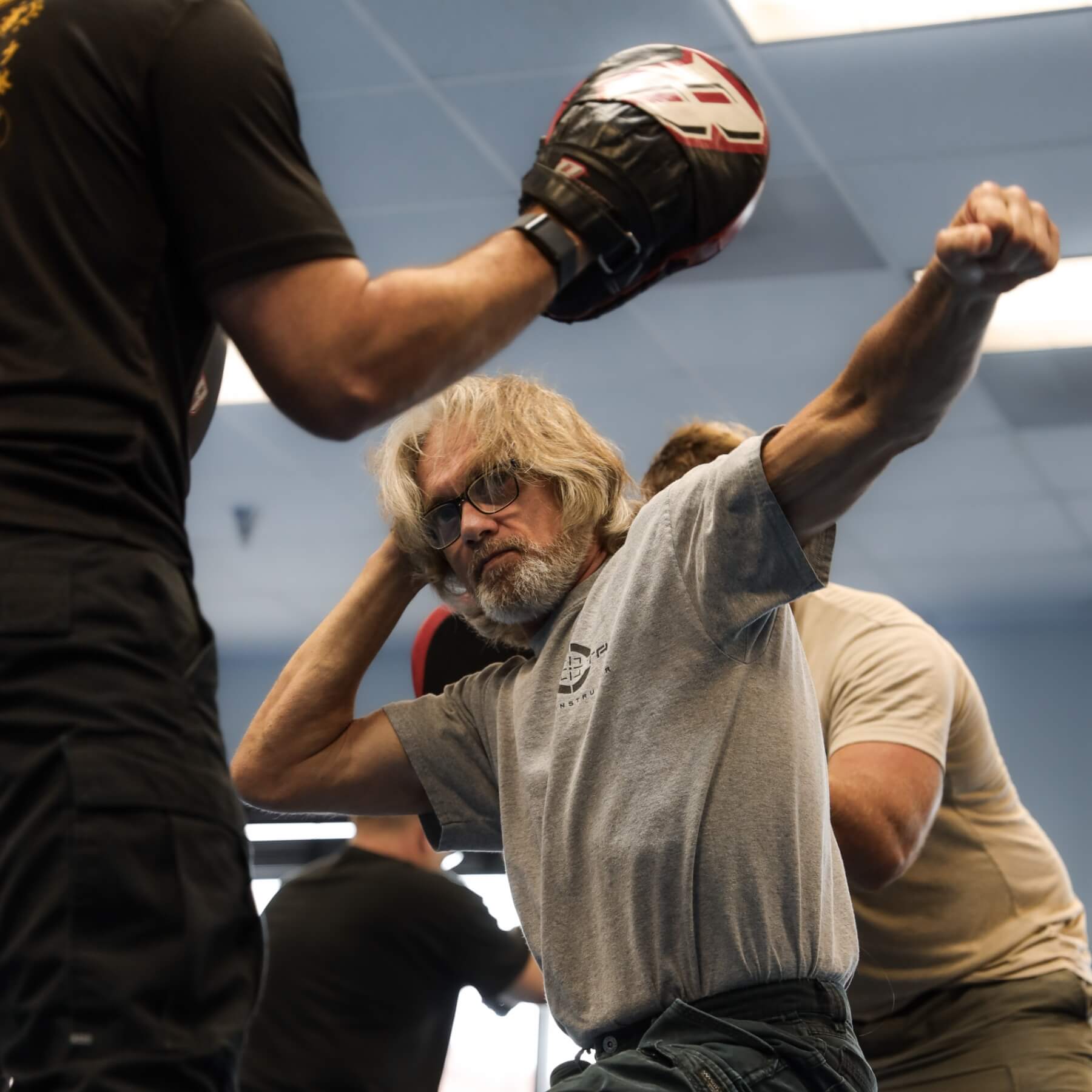
If you're interested in taking your self-defense skillset to the next level, you can sign up for this course here.

